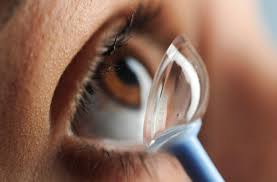Contact lenses are a popular vision correction option that offers convenience, flexibility, and an alternative to traditional eyeglasses. Optometrists consider various factors, such as a patient’s lifestyle, prescription needs, and eye health, when recommending specific types of contact lenses. Each lens type is designed to address different requirements, ranging from daily wear to specialized corrective solutions. Here are five key contact lens options that your eye doctor may recommend.
1. Soft Contact Lenses
Soft contact lenses are made from flexible, water-absorbing materials that allow oxygen to pass through to the cornea. They are easy to adapt to and offer a comfortable wearing experience. Optometrists recommend soft lenses for various vision conditions, including myopia, hyperopia, and astigmatism. They are also available in daily, weekly, and monthly wear options.
2. Rigid Gas-Permeable Lenses
Rigid gas-permeable (RGP) lenses are smaller and less flexible than soft lenses. They allow more oxygen to reach the cornea and are highly durable. RGP lenses are often recommended by optometrists for individuals with irregular corneas or specialized vision correction needs, such as keratoconus or high astigmatism.
3. Scleral Contact Lenses
Scleral lenses are large-diameter, gas-permeable lenses designed to rest on the sclera (the white part of the eye) rather than the cornea. These lenses create a tear-filled space over the cornea, offering comfort and protection while addressing more complex vision issues. They are often ideal for individuals with corneal irregularities, such as keratoconus or severe dry eye conditions.
4. Multifocal Contact Lenses
Multifocal lenses are designed for individuals with presbyopia, a condition that affects the eye’s ability to focus on close objects as individuals age. These lenses provide multiple prescription strengths within a single lens, allowing you to see clearly at both near and far distances. Multifocal lenses are available in soft, rigid gas-permeable, and hybrid options.
5. Ortho-K Lenses
Orthokeratology (Ortho-K) lenses are rigid gas-permeable lenses worn overnight to temporarily reshape the cornea. These lenses correct refractive errors, such as myopia and astigmatism, allowing clear vision during the day without needing glasses or contact lenses. Ortho-K is often recommended for children or individuals looking for an alternative to daytime lenses.
Benefits of Contact Lenses
Contact lenses offer several advantages over traditional eyeglasses, making them a preferred choice for many individuals. One primary benefit is their ability to provide a wider field of vision, as they move with the eye and eliminate the peripheral distortions often associated with glasses. They are lightweight and less obtrusive, offering improved comfort and aesthetic appeal.
Contact lenses are also highly versatile, catering to various vision correction needs, including myopia, hyperopia, astigmatism, and presbyopia. For active individuals, they are particularly beneficial as they provide greater stability and do not hinder physical activities. Advanced lens materials and designs enhance oxygen permeability, promoting healthier eyes for long-term use.
See an Optometrist Today
Selecting the right contact lenses can significantly improve your vision and comfort. Each lens type offers unique benefits suited to different eye conditions and lifestyle needs. To determine which type is best for you, consult an optometrist who can evaluate your vision and recommend the most appropriate solution.
- FREHF – The Revolutionary Future Of Human-Centered Technology!
- Adsy.Pw/Hb3 – Boost Your SEO And Drive More Traffic!
- Fitness Based Vacations By Timeshealthmage.com!
- TimesHealthMag Tips For Improving Sleep Quality – Expert Advice For Better Rest!
- How TimesHealthMage Helps Improve Your Lifestyle Habits!


Leave a Reply